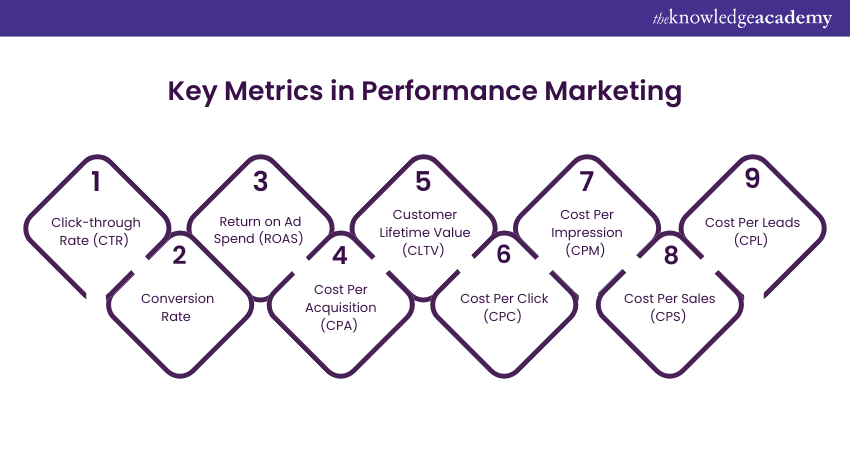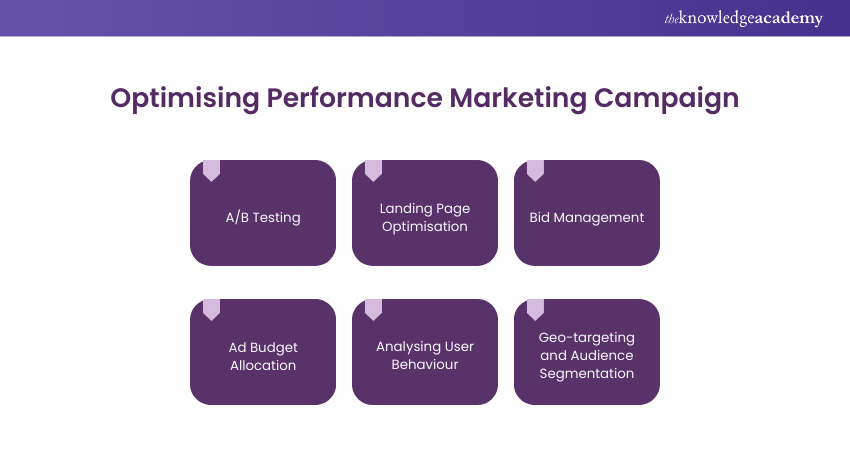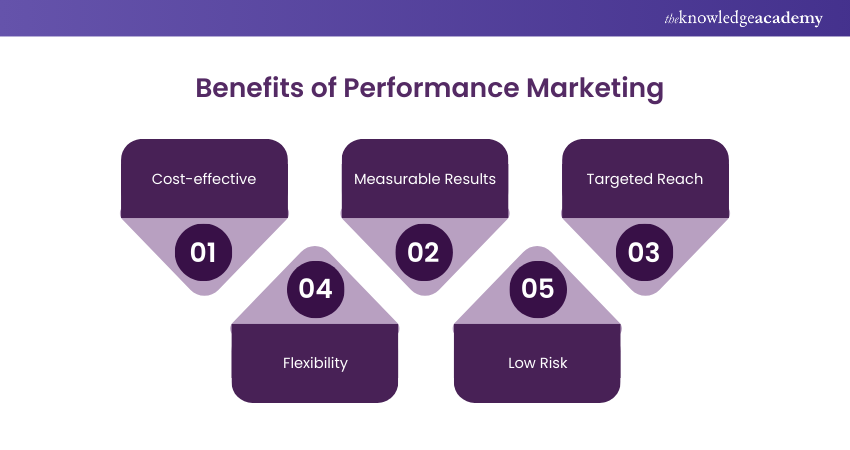We may not have the course you’re looking for. If you enquire or give us a call on +30 2111995372 and speak to our training experts, we may still be able to help with your training requirements.
Training Outcomes Within Your Budget!
We ensure quality, budget-alignment, and timely delivery by our expert instructors.

Performance Marketing is revolutionising the way businesses handle advertising and promotion. It’s not just about creating a buzz; it’s about delivering measurable results and maximising Return On Investment (ROI) with precision. But What is Performance Marketing exactly, and why is it generating so much excitement?
As per Statista, Performance Marketing spending is projected to reach €300.50 billion by 2025. With such a massive projection, it’s no wonder that innovative online marketing strategies are popping up everywhere. From social media ads to email campaigns, Performance Marketing is leading the charge. This blog will provide insights into What is Performance Marketing, explore its various metrics, and types, and how to create a successful campaign.
Table of Contents
1) Understanding What is Performance Marketing
2) Key Metrics in Performance Marketing
3) Types of Performance Marketing
4) Performance Marketing Examples
5) Optimising Performance Marketing Campaigns
6) Benefits of Performance Marketing
7) Limitations of Performance Marketing
8) Conclusion
Understanding What is Performance Marketing?
Performance Marketing is a Digital Marketing strategy driven by results, where advertisers (like a brand or business) only pay once a goal is met. This goal can be anything from making a purchase to filling out a form on a landing page.
Key points of Performance Marketing:
a) Reduced Risk: Pay only when goals are met.
b) Guaranteed ROI: Payment tied to performance ensures ROI.
c) Better Ad Spend Control: Budget is used effectively.
d) Real-time Adjustments: Allows for immediate campaign tweaks.
e) No Upfront Costs: Unlike traditional ads, no payment without results.
f) Diverse Channels: Utilises social media, search engines, videos, and websites.
Key Metrics in Performance Marketing
Key performance metrics in Performance Marketing help businesses track the success of their campaigns. Here are the key metrics:

1) Click-through Rate (CTR)
Click-through rate (CTR) measures how successful an advertisement is at eliciting viewer interaction. It is typically determined by dividing the amount of clicks an advertisement receives by the number of times it is displayed (impressions). Next, increase the number by a factor of 100 in order to obtain the percentage.
A high click-through rate shows that your advertisement is getting noticed by the specific group you are targeting and motivating them to act. It shows the importance and attractiveness of your advertisement content. Nonetheless, a low CTR could suggest that your ad is not connecting with the audience. It might also indicate that it is being shown to the incorrect target demographic.
In order to boost CTR, think about enhancing your ad text, utilising captivating graphics, and making sure your ad's message matches the user's intent.
2) Conversion Rate
It is a conversion rate that calculates the proportion of users who perform a given task, including buying a product, subscribing to a list, or installing an application. The formula used for calculating is the ratio of the number of conversions to the number of visitors and then multiplied by 100 to give the value as a percentage.
A high conversion rate means that your campaign targets are not only getting the user’s attention but also leads to the desired action. Low conversion rates may therefore point to appropriate problems such as landing page problems, checkout process problem or the proposition of the value offered. To increase conversion rates, it is necessary to pay special attention to the quality of the landing pages and distinctive Calls to Action (CTA).
3) Return on Ad Spend (ROAS)
ROAS can be defined as the amount of revenue that is made for every dollar that is spent on advertising. Usually, it is the ratio of the campaign revenue to the campaign cost. This method is helpful when it comes to determining the financial efficiency of particular campaigns.
To improve the ROAS further, it is necessary to pay more attention to the target audience. Maximise the effectiveness of the ad placement and change bids based on the performance of different segments.
4) Cost Per Acquisition (CPA)
It is another evaluation method that defines how much amount is spent for procuring a customer from a particular campaign. It is determined by the total cost of the campaign divided by the number of conversions.
It is essential when determining your campaign effectiveness. A low CPA shows that the company is attracting customers at a rate that is cost effective, while a high CPA may mean that the cost of acquiring customers had to be increased.
5) Customer Lifetime Value (CLTV)
Customer Lifetime Value (CLTV) is a metric that predicts the net value a customer brings to your business. It measures this value throughout their entire engagement with your brand. It also considers factors like repeat purchases, upsells, and referrals.
CLTV helps you understand the impact of acquiring a customer. If CLTV is much higher than CPA, it indicates successful retention and value generation. To maximise CLTV, build strong customer relationships and offer exceptional post-purchase experiences. Focus on products or services that encourage repeat business.
6) Cost Per Click (CPC)
It is the amount you pay each time someone clicks on your ad. It’s a common model used in search engine and social media advertising. Businesses set a budget, and each click on their ad reduces that budget by the CPC amount. The cost of each click can depend on factors like competition and keywords. CPC helps control ad spending and ensures you only pay when someone shows interest in your ad.
7) Cost Per Impression (CPM)
Cost Per Impression (CPM) refers to the cost of displaying your ad to 1,000 people. It's commonly used in display advertising, where businesses pay for the number of times their ad is seen, not clicked. CPM is useful for raising brand awareness since it focuses on getting your ad in front of many people.
Even if viewers don’t click, the ad can still influence future decisions. This method is more focused on visibility rather than direct actions like clicks.
8) Cost Per Sales (CPS)
Cost Per Sales (CPS) is a model where advertisers pay only when a sale is made through their ad. It’s a result-driven approach that ensures businesses only pay for successful conversions. CPS is often used in affiliate marketing, where partners are paid a commission based on sales.
This method helps reduce risk, as companies don’t spend money on ads unless they lead to revenue. It's highly effective for e-commerce and product-based campaigns.
9) Cost Per Leads (CPL)
Cost Per Leads (CPL) is the cost businesses pay to acquire a potential customer’s contact information, such as email or phone number. This model is used in campaigns focused on generating leads for future sales. Businesses only pay when someone fills out a form or signs up, making CPL a great option for growing customer databases.
It helps companies measure how much they spend to gather leads for further marketing efforts. This method is popular in industries like real estate, education, and financial services.
Types of Performance Marketing
Modern businesses use four main types of Performance Marketing:

Social Media Advertising
a) Platforms: TikTok, Facebook, Instagram, Twitter, LinkedIn
b) Campaign Types:
a) Prospecting: Reaching new people.
b) Retargeting: Targeting those who visited the site but didn’t purchase
c) Purpose: Not always Performance Marketing; it can be for brand awareness or market validation
Search Engine Marketing (SEM)
a) Platforms: Google, Bing
b) Campaign Basis:
a) Product types
a) Competitor brands
b) Business’s own brand
c) Nature: Almost always Performance Marketing, distinct from SEO
Influencer Marketing
a) Traditional View: Not seen as Performance Marketing
b) Current View: Now performance-driven with tools like Gatsby for tracking and improving partnerships
Native Advertising/Sponsored Content
a) Method: Paying publications to write about your brand
b) Control: High control over content
c) Disclosure: Must be disclosed as sponsored in most countries
Performance Marketing Examples
Here are a few common examples of Performance Marketing:
a) Pay-Per-Click (PPC) Advertising:
a) Businesses pay per click on their ad
b) Example: Google Ads
b) Affiliate Marketing:
a) Businesses pay affiliates a commission for driving traffic or sales
b) Example: Amazon Associates
c) Social Media Ads:
a) Platforms: Facebook, Instagram, LinkedIn
b) Payment based on clicks, leads, or conversions
d) Cost-Per-Acquisition (CPA):
a) Advertisers pay only when a specific action (e.g., sale, sign-up) is completed.
b) Common in e-commerce campaigns
e) Influencer Marketing:
a) Influencers are paid based on campaign performance (e.g., sales, clicks)
Master the principles of customer experience with our Digital Marketing Course – Join today!
Optimising Performance Marketing Campaigns
Here are the ways to optimise your Performance Marketing campaigns:

1) A/B Testing
A/B testing involves comparing two variations of an element to determine which performs better. This can include testing different ad creatives, headlines, calls to action, or even landing pages. By systematically experimenting with variations, you identify what resonates best with your audience and modify your strategies accordingly.
2) Landing Page Optimisation
Your landing pages are where conversions happen. Continuously optimise them for a seamless user experience. Test different layouts, content placements, and calls to action to determine which combination generates the highest conversion rates. Ensure that the message on the ad aligns with what's on the landing page.
3) Bid Management
Effective bid management is crucial in paid advertising. Adjust your bids based on the performance of different keywords, placements, and audiences. Allocate more budget to high-converting keywords and decrease bids for those not delivering results. Balancing your bid strategy can significantly enhance your ROI.
4) Ad Budget Allocation
As you gather more data, adjust your budget allocation to maximise results. Channel your budget towards platforms, campaigns, or ad sets that deliver the best return on investment. Be prepared to shift resources away from less effective areas and reallocate them where they generate higher conversions.
5) Analysing User Behaviour
Understand how users interact with your campaigns. Are they dropping off at a particular stage in the funnel? Are they spending more time on certain pages? Use tools like heatmaps and session recordings to gain insights into user behaviour, identifying pain points and areas for improvement.
6) Geo-targeting and Audience Segmentation
It is also possible to refine your targeting by using demographic, behavioural or geographic targeting techniques. To enhance relevancy and interest, try to target these specific segments in your communication. Geo-targeting, in particular, can serve as a driving force for local businesses or campaigns that will have location-based offers.
Benefits of Performance Marketing
Here are the advantages of it:

a) Cost-effective: You only pay for actual results, like clicks or sales. This means you don't waste money on ineffective ads. It's a great way to control your budget.
b) Measurable Results: Performance Marketing lets you track the success of your campaigns in real-time. You can see exactly what's working and adjust as needed. This helps you improve your Performance Marketing Strategy quickly.
c) Targeted Reach: You can focus your ads on specific audiences who are likely to convert. This increases the chances of attracting the customers. It saves time and effort on untargeted promotions.
d) Flexibility: You can easily change your campaign if it's not performing well. This allows you to experiment with different strategies. It's adaptable and can be fine-tuned as needed.
e) Low Risk: Since you only pay when you get results, it's a lower-risk marketing approach. This ensures you're spending money on what truly works. It reduces the risk of wasting resources.
Learn how to optimise strategies with our Digital Marketing Tools Training – Join today!
Limitations of Performance Marketing
Here are the disadvantages of it:
a) Requires Constant Monitoring: Performance Marketing campaigns need ongoing attention to succeed. If you don't monitor them closely, they might not deliver the desired results. This can take up time and effort.
b) Limited Brand Awareness: Since the focus is on immediate actions like clicks, building long-term brand awareness can be challenging. This means your brand might not stay in customers' minds. It's not ideal for companies looking to establish a strong identity.
c) Ad Fatigue: Audiences can get tired of seeing the same ads repeatedly. When this happens, performance decreases. You’ll need to refresh your ads regularly to keep them engaging.
d) Initial Setup Costs: While you pay for results, setting up a Performance Marketing campaign can be costly upfront. This includes creating ads and setting up tracking tools. The return on investment might take time to show.
e) Over-reliance on Data: Decisions are made based on data, but sometimes, data doesn’t tell the full story. This can lead to over-optimisation, where you focus too much on numbers and not enough on the customer experience. It may limit creativity in campaigns.
Conclusion
Understanding What is Performance Marketing is essential for modern businesses aiming to drive measurable results. By focusing on outcomes and accountability, Performance Marketing allows companies to efficiently allocate resources, track success, and continually optimise their strategies. Embracing this approach can lead to great improvements in ROI and overall marketing effectiveness.
Learn marketing strategies with our Performance Marketing Training – Join today!
Frequently Asked Questions

Performance Marketing helps small businesses achieve measurable results, optimise budgets, and target specific audiences effectively. It offers cost efficiency and scalable growth opportunities by focusing on actual performance.

To excel, you need strong analytical skills, proficiency in data analysis, digital advertising knowledge, and a grasp of various marketing platforms. Strategic thinking and adaptability are also crucial for optimising campaigns.

The Knowledge Academy takes global learning to new heights, offering over 30,000 online courses across 490+ locations in 220 countries. This expansive reach ensures accessibility and convenience for learners worldwide.
Alongside our diverse Online Course Catalogue, encompassing 19 major categories, we go the extra mile by providing a plethora of free educational Online Resources like News updates, Blogs, videos, webinars, and interview questions. Tailoring learning experiences further, professionals can maximise value with customisable Course Bundles of TKA.

The Knowledge Academy’s Knowledge Pass, a prepaid voucher, adds another layer of flexibility, allowing course bookings over a 12-month period. Join us on a journey where education knows no bounds.

The Knowledge Academy offers various Digital Marketing Courses, including Performance Marketing, Social Media Marketing and Affiliate Marketing. These courses cater to different skill levels, providing comprehensive insights into Digital Marketing Campaign.
Our Digital Marketing Blogs cover a range of topics related to Performance Marketing, offering valuable resources, best practices, and industry insights. Whether you are a beginner or looking to advance your skills in Digital Marketing, The Knowledge Academy's diverse courses and informative blogs have you covered.
Upcoming Digital Marketing Resources Batches & Dates
Date
 Digital Marketing Course
Digital Marketing Course
Fri 24th Jan 2025
Fri 28th Mar 2025
Fri 23rd May 2025
Fri 25th Jul 2025
Fri 26th Sep 2025
Fri 28th Nov 2025







 Top Rated Course
Top Rated Course



 If you wish to make any changes to your course, please
If you wish to make any changes to your course, please


